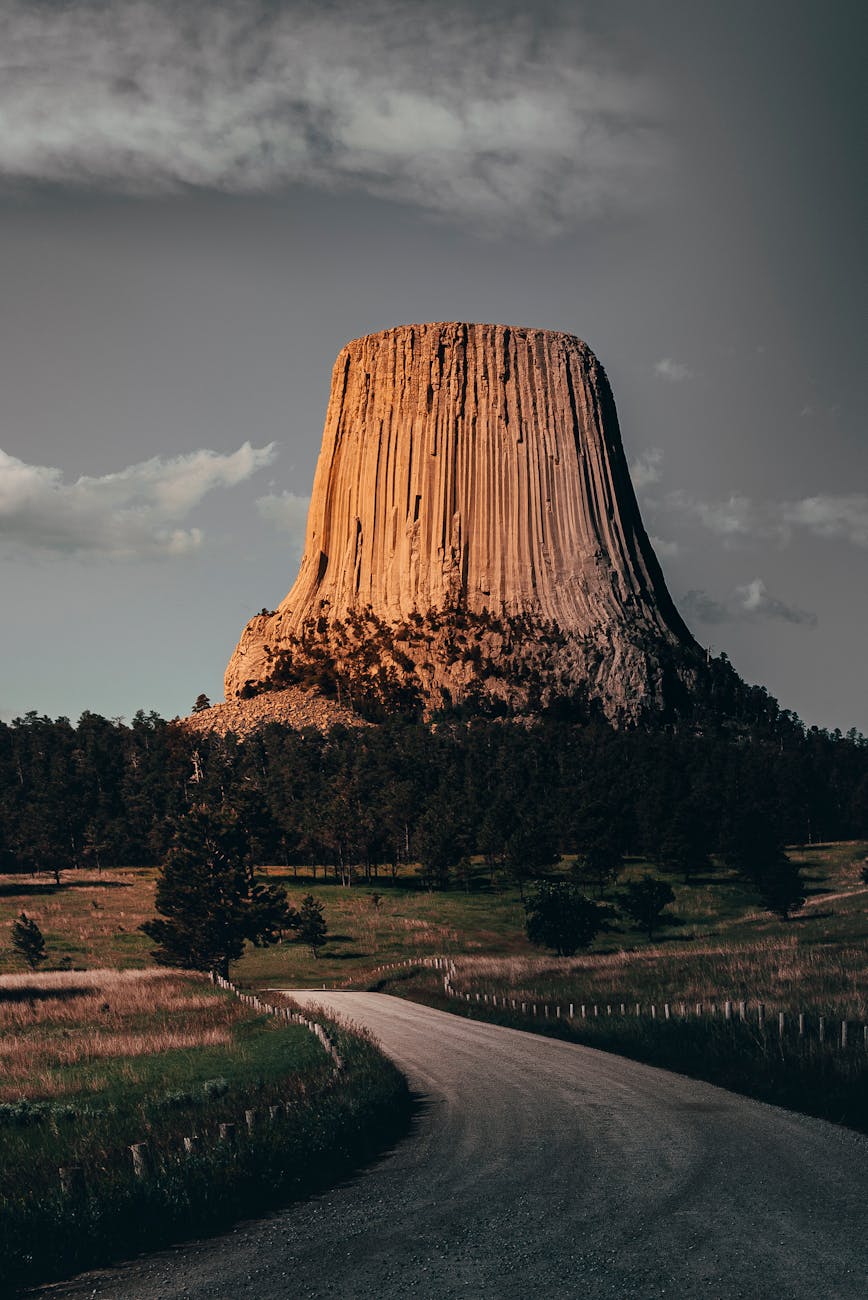For the past three decades I have written scenarios of the future for a living. I aim to make them detailed and plausible. That is all I can promise, because the more detailed each scenario gets, the less likely that scenario is to “come true.” Still, detailed scenarios, despite being inevitably “wrong,” allow people to think about issues and possibilities they would never otherwise consider, because what passes for “serious planning” in our society is a detailed, single-point forecast of the “most likely future.” If one is not staking one’s reputation on one’s perfect forecasting accuracy, one is not being “rigorous.”
At present we are embroiled in the closing stages of an election the outcome of which is in complete doubt. This does not stop people from absolutely obsessing about the latest polls, which don’t seem like they are going to offer any certainty to anyone. But there seems to be almost no real, in-depth examination of what one candidate or the other winning would actually mean for the country.
What would really happen if Trump won? What would really happen if Harris won? We can’t know for certain. But we, and/or our journalists and pundits, OUGHT to be talking a lot more about those things, and a lot less about polls.
To this end, here is the second of two (inevitably skewed and “wrong,” but plausible and possibly even useful) scenarios of what could happen.
SCENARIO TWO: 2026 After a Harris Victory
The polls were wrong again, but in a different direction from 2016 and 2020. The “dead heat” of the past few weeks resolved itself, as late-breaking voters, alarmed by Trump’s increasingly unhinged rhetoric, went largely to Harris in most of the swing states. Republicans, of course, did not believe Trump could lose legitimately. Ballot counting went late into the night in Wisconsin and Pennsylvania, and, as in 2020, the final tallies were not available for days afterward.
As in 2020, Trump never conceded. But without the power of the presidency to hold over governors and state legislatures, he was unable to mount the sort of full-court press to overturn the election that he had four years earlier. This did not prevent a lot of violence from breaking out, as rage-filled Trump supporters swarmed polling places, election board meetings, their state capitals, and Washington, DC. Trump openly said the election had been stolen, and called on “patriots” to “stop the second steal.” Many heeded the call, and the FBI announced that a number of violent plots had been prevented from coming to fruition. This left any number of “lone wolves” incited by Trump’s words and the broader apocalyptic warnings of far-right groups. Immigrant communities and other minorities came under attack from Trump-supporting far-right groups.
This fraught situation continued throughout the transition. Sporadic violence continued, spiking just before Kamala Harris certified her own election on January 6, to howls of protest by Trump supporters who claimed she was “illegitimately granting herself dictatorial powers.”
January 20, 2025 was very similar to four years earlier. A massive (and very necessary) security presence surrounded the Capitol building as Vice President Harris took the oath of office, in the absence of her opponent and many Trump-supporting Republican legislators, but in the presence of three past presidents. The streets of Washington, DC were thronged with generally quietly happy Democrats, though a number of instances of far-right violence marred the scene.
Harris’ speech reached out to the defeated Trump supporters, stressing the unity of the American people, and asking them to judge her by her actions, not by what they were hearing on social media. The speech was applauded by the mainstream media, but Trumpists were unswayed.
Republicans were still dealing with their failure to regain the White House, but they did have control of the Senate, and they used that control to block every action that President Harris wished to take. Harris’ campaign agenda – tax breaks for middle class home ownership and business startups, e.g. – went nowhere in the GOP Senate. She was therefore forced to govern more or less by Executive Order, which Republicans called “lawless” and “dictatorial.” No budget was passed cleanly during Harris’ term.
When a Republican-appointed Supreme Court justice needed to be replaced, the Senate refused to hold hearings on his replacement. The Supreme Court, in turn, ruled many of Harris’ Executive Orders unconstitutional, rendering the government unable to perform many more or less normal functions; Republicans shouted that Harris was “incompetent” in response. Other judicial appointments were blocked almost completely, leaving many judgeships unfilled, clogging court dockets and skewing decisions toward Republican-favored outcomes.
Donald Trump had been sentenced to probation for his New York felony conviction in late 2024. As his federal trials inched forward through 2025 and 2026, his lawyers appealed every possible open issue to the Supreme Court, which in turn demanded endless clarifications and alterations to the government’s cases. Trump pointedly refused to say he would not run for president again, which tended to freeze any potential successor to him in the GOP.
With Harris as president, the Lankford GOP border bill was brought back up by House Democrats, but Senate Republicans refused to countenance a Harris “win,” and decided that chaos at the border was a political winner for them. They insisted the bill was a “path to amnesty” and would countenance “open borders.” The numbers of migrants swelled seasonally, but far below the levels seen in the early Biden administration. This did not matter, as right-wing media continued to seek out examples of “migrant crime” to splash onto their screens.
Indeed, the two “media bubbles” in the country were hardening into separate realities. Liberals argued that they occupied reality, with vetted facts and figures. Right-wing media, on the other hand, insisted that Democrats were scheming to subvert Christianity, turn kids into trans drag queens, put white people into concentration camps, and prioritize foreigners over Americans. Right-wing channels increasingly identified openly with Russian interests, demanding that funding for the war in Ukraine be abandoned. This had results with the GOP Senate, which blocked any further funding for Ukraine arms.
NATO and the EU took note of the new U.S. undependability, and, with vocal (but non-monetary) support from the Harris administration, resolved to go it alone and rearm against the Russian threat without U.S. help. Ukraine suffered battlefield losses, but fought on; the alternative, they felt, was surrender to Russia and mass murder of civilians. The EU hugely increased its support of Kyiv, but the war for the moment was at a stalemate.
Harris tried, with little success, to stop Netanyahu from expanding his war on Hamas, Hezbollah, and Iran. Netanyahu responded by claiming, falsely, that Democrats were preventing necessary weapons from reaching Israel; he also once again spoke to Republicans in Congress, while pointedly not going to the White House.
With Trump-era individual tax cuts expiring in 2025, Harris sought to make a deal with the GOP Senate, offering to extend tax cuts for businesses (due to expire in 2028) for a continuation of individual tax cuts for the 97% of American households making less than $400,000 a year. That issue dominated Harris’ first year as president. Economists, who had been rather mute on the issue of the national debt and federal deficits for the past decade, suddenly took note of the rapidly expanding shortfall between federal taxes collected and federal expenditures (massively increasing due to Baby Boom retirements and medical expenses), and decried the Harris administration’s “irresponsibility” in failing to deal with the issue.
Progressive Democrats were increasingly vocal about what they saw as the Harris administration’s “overly centrist” policies, while Republicans denounced her administration as “socialist” and “woke.” Harris had backed away from some more progressive positions on trans issues, but this gained her no friends on the right, while alienating some on the left.
The GOP Senate, aside from opposing Harris administration initiatives, spent much of its time on hearings about alleged misdeeds of Democrats. The Democratic House was far less chaotic than its GOP predecessor, but almost none of the voluminous legislation it passed achieved approval by the Senate.
One might think that having lost the past two presidential elections, Donald Trump might have lost some sway over the Republican party, and Republicans might be debating a new way forward. Nothing could be further from the truth. Though Trump is aging, and whispers about a decline in his physical and mental health are heard (and echoed by the mainstream media), his hold on the rank and file is nearly as strong as ever. “No one wants to be the first to break ranks,” one anonymous Republican said. “We’ve seen what happens to people that try to go against Trump.” The Republican philosophy is still strongly “MAGA,” which is now more or less defined as “against anything any Democrat is for.”
By 2026, the mood of the public remained unsettled. Harris’ limited ability to get things done was not well-received. However, Democrats’ loud protests against the GOP’s intransigent blocking of any useful legislation, plus a slight fading of Trump’s appeal, continued sporadic right-wing violence, and the Republicans defending 20 seats as opposed to the Democrats’ 13, gave Democrats hope that they would be able to begin truly governing by January 2027.
But increasing wealth disparities, slipping economic growth, and unemployment ticking upward (especially in certain “purple” states), along with a stock market that was not piling on the gains it had over the previous decade, put the issue in doubt. Republicans were no more popular than they had been before; but Democrats were markedly less popular than they had been. “We all know what a Trump Republican is; we knew what a Reagan Republican was. There were no Obama Democrats, or Biden Democrats, and there are no Harris Democrats,” a Democratic lawmaker lamented. “There is a failure of leadership and of messaging, and an enthusiasm gap, because we are a coalition, and they are a tribe.”
Meanwhile, continued massive spending by right-wing institutions ensured that, in fifty states and every territory, more and more people were being inculcated in a MAGA-type point of view, and being encouraged to run for school boards, local town councils, state offices, and other things still largely overlooked by the top-down “liberal establishment.” In addition, the “Joe Rogan,” “Barstool Sports,” MAGA-friendly, Democrat-unfriendly young male cohort, of all ethnicities and races, alienated by its difficulty in finding employment and life satisfaction, was a newly acknowledged fact of the political scene.
So when the next big shoe dropped… you know the one… the country was neither united nor prepared.



